Forex Trading Strategies for Using Pivot Points: Techniques for Trading Based on Pivot Point Levels
The forex market is known for its dynamic and volatile nature, offering countless opportunities for traders to profit. However, navigating this market requires a solid understanding of various trading strategies and tools. One such tool that has gained popularity among traders is the pivot point. Pivot points are significant price levels calculated from the previous day's high, low, and close prices. They serve as potential support and resistance levels and are widely used by traders to make informed trading decisions. In this article, we will delve into the world of forex trading strategies centered around pivot points and explore techniques for effectively incorporating them into your trading arsenal.
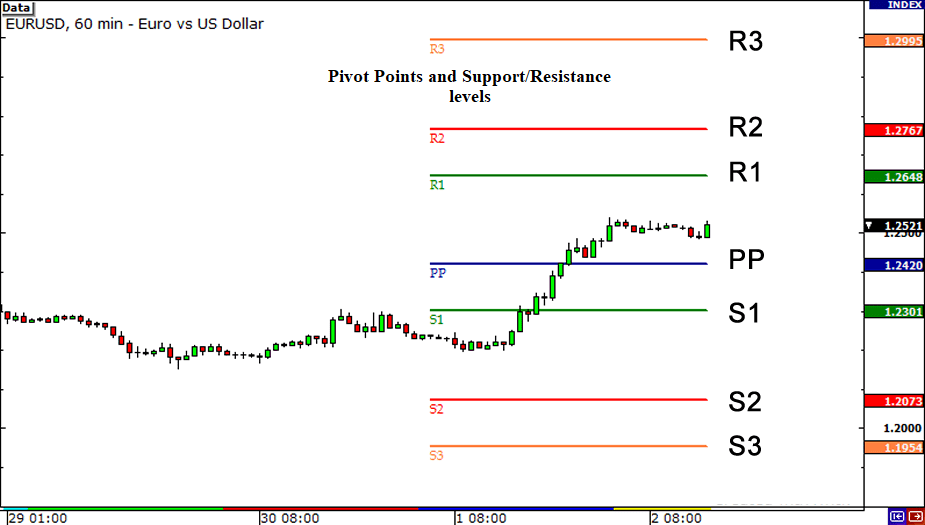
Table Content
I. Understanding Pivot Points
II. Pivot Points as Trading Indicators
1. Pivot Point Bounce
2. Breakout Strategy
3. Confluence of Pivot Points with Other Indicators
4. Pivot Point and Candlestick Patterns
III. Implementing Pivot Point Strategies
1. Multiple Time Frame Analysis
2. Combine Pivot Points with Trend Analysis
3. Monitor Price Action
4. Set Clear Entry and Exit Points
5. Practice Risk Management
IV. Footnote
Understanding Pivot Points:
Before delving into trading strategies, it's crucial to understand the basics of pivot points. Pivot points are derived from a mathematical formula that considers the high, low, and close prices of the previous trading day. The primary pivot point, also known as the "pivot," is calculated by adding the previous day's high, low, and close prices and then dividing the sum by three. This pivot point serves as a central reference level from which various support and resistance levels are calculated.
Pivot Point (PP) = (Previous High + Previous Low + Previous Close) / 3
Apart from the central pivot point, there are several support and resistance levels derived from the pivot point calculation. These levels include:
- Support 1 (S1) = 2 * PP - Previous High
- Support 2 (S2) = PP - (Previous High - Previous Low)
- Support 3 (S3) = Low - 2 * (Previous High - PP)
- Resistance 1 (R1) = 2 * PP - Previous Low
- Resistance 2 (R2) = PP + (Previous High - Previous Low)
- Resistance 3 (R3) = High + 2 * (PP - Previous Low)
Pivot Points as Trading Indicators:
Pivot points are valuable indicators that help traders identify potential entry and exit points, as well as set stop-loss and take-profit levels. Here are a few trading strategies that utilize pivot points:
1. Pivot Point Bounce:
The pivot point itself acts as a significant support or resistance level. In the pivot point bounce strategy, traders watch for price action near the pivot point. If the price approaches the pivot point and shows signs of reversal, it can be a potential entry point. For instance, if the price bounces off the pivot point and starts moving upward, it might indicate a bullish trend. Conversely, if the price bounces downward from the pivot point, a bearish trend could be emerging.
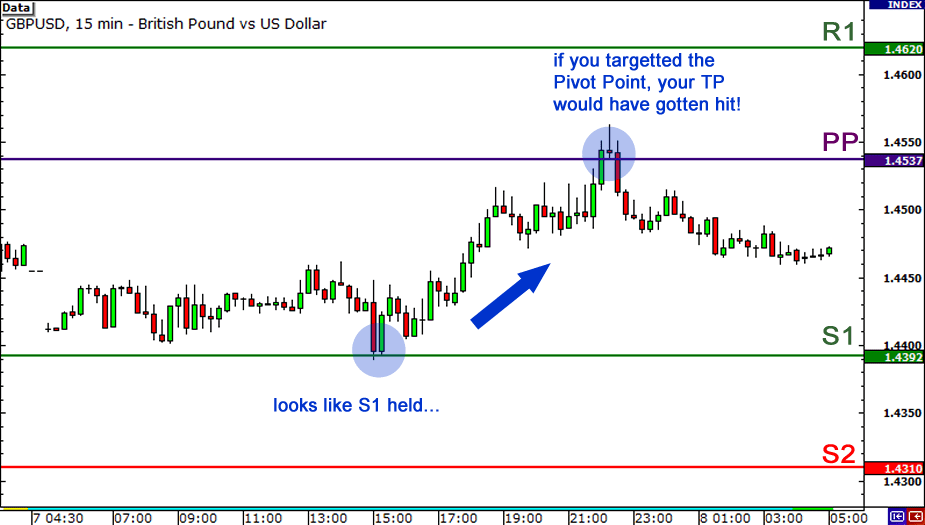
2. Breakout Strategy:
The breakout strategy involves monitoring price movement around support and resistance levels derived from the pivot point calculation. When the price breaks above a resistance level, it could signal a potential bullish breakout, and traders might consider entering a long position. Conversely, if the price breaks below a support level, a bearish breakout might be underway, prompting traders to consider short positions.
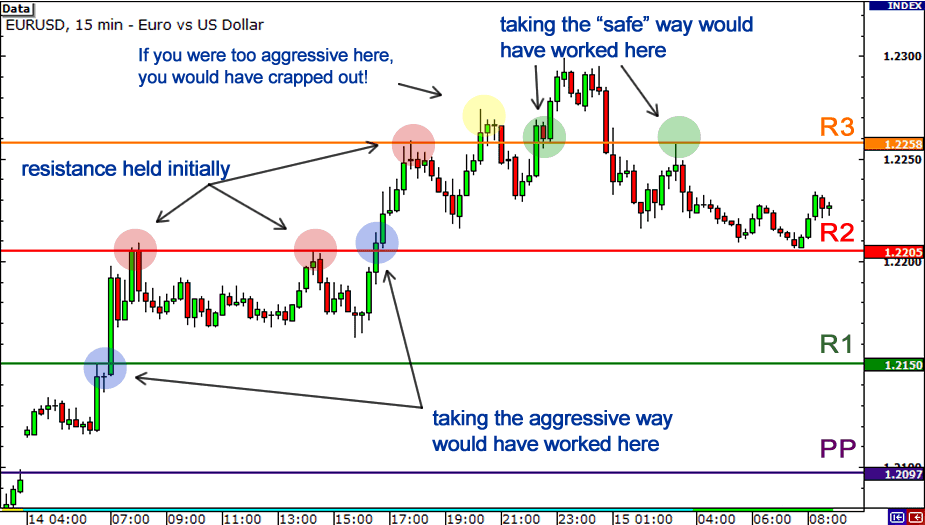
3. Confluence of Pivot Points with Other Indicators:
To enhance the accuracy of pivot point-based strategies, traders often combine pivot points with other technical indicators, such as moving averages, trendlines, and oscillators. When these indicators align with pivot point levels, it adds an extra layer of confirmation to the trading decision.
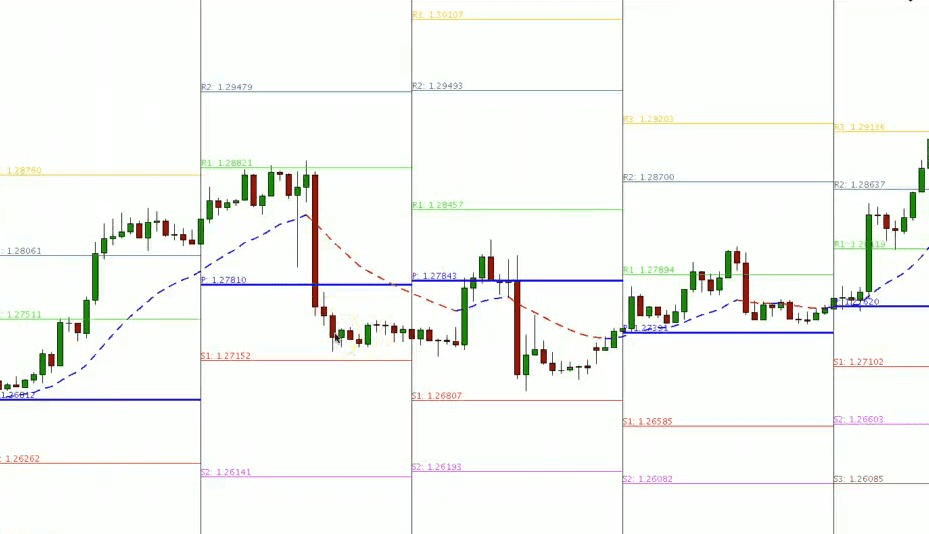
4. Pivot Point and Candlestick Patterns:
Candlestick patterns provide insights into market sentiment, and when combined with pivot points, they can yield powerful trading signals. For instance, a bullish engulfing pattern forming near a pivot support level could indicate a potential upward reversal.
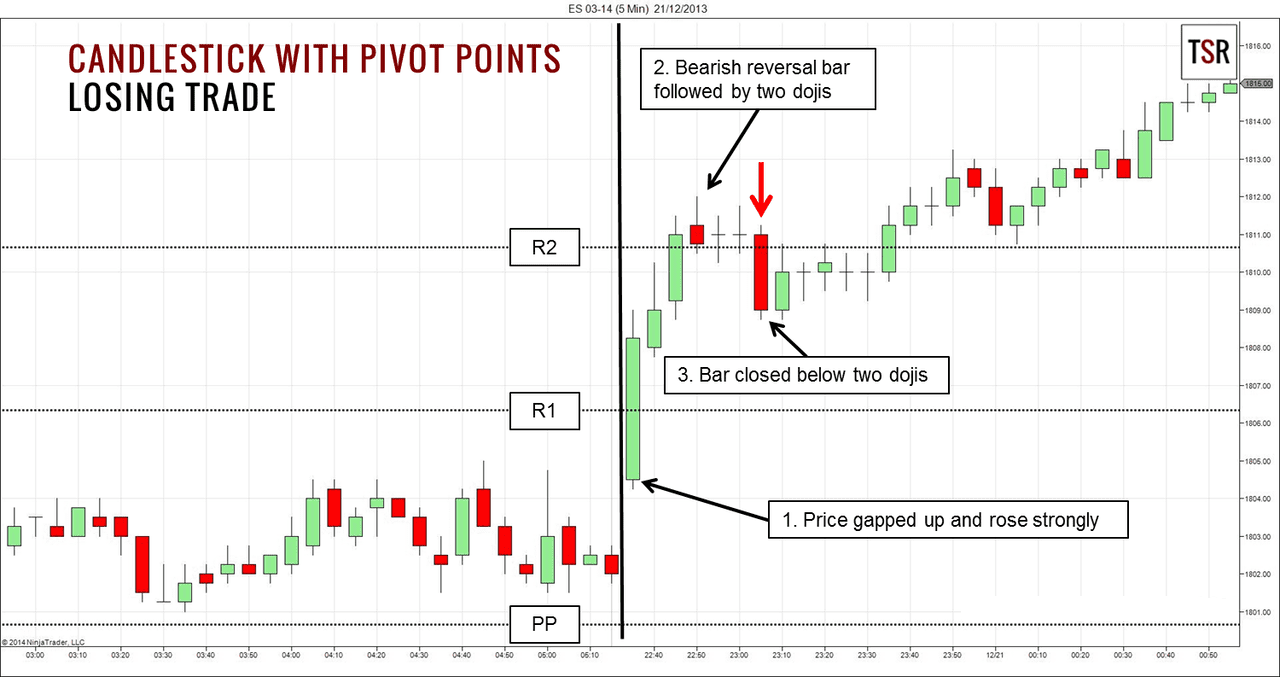
Implementing Pivot Point Strategies:
While pivot points offer valuable insights, successful implementation requires careful analysis and risk management. Here are some techniques to consider when using pivot points in your trading:
1. Multiple Time Frame Analysis: Pivot points should be analyzed across multiple time frames. A pivot point level that is significant on a daily chart might not hold the same weight on a shorter time frame. Aligning pivot points across different time frames can provide a more comprehensive view of potential support and resistance levels.
2. Combine Pivot Points with Trend Analysis: It's essential to consider the overall market trend when using pivot points. A pivot point bounce off a significant trendline can strengthen the validity of a potential trade setup.
3. Monitor Price Action: Pay close attention to price behavior around pivot points. Reversal candlestick patterns, doji formations, and other price action signals can provide valuable clues about the market's next move.
4. Set Clear Entry and Exit Points: Define your entry, stop-loss, and take-profit levels before entering a trade. Pivot points can help you identify these levels with greater precision.
5. Practice Risk Management: As with any trading strategy, risk management is paramount. Only risk a small percentage of your trading capital on each trade and use appropriate position sizing.
Footnote:
Pivot points are versatile tools that offer traders valuable insights into potential support and resistance levels. By incorporating pivot point-based strategies into your trading approach, you can make more informed decisions and improve your trading outcomes. Remember that pivot points work best when combined with other technical and fundamental analysis techniques. As the forex market continues to evolve, mastering pivot point strategies can provide you with a competitive edge and enhance your ability to navigate the complexities of currency trading.











Discussion